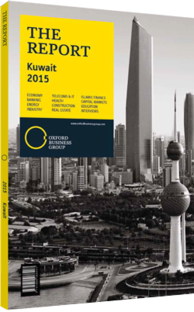Banking
THE COMPANY: Kuwait Finance House (KFH) was established in 1977 as the first Islamic financial institution in Kuwait providing banking services, purchase and sale of properties, leasing, project construction and other trading activities. The bank was listed on the Kuwait Stock Exchange in 1984, and is currently the second-largest company on exchange with a market capitalisation of KD3.2bn ($11.02bn). KFH is also the second-largest financial institution in Kuwait in terms of total asset base at KD17.2bn ($59.26bn) and customer deposits of KD10.9bn ($37.55bn). Major international rating agencies, namely Moody’s, Fitch Ratings and Standard & Poor’s (S&P) continue to rate KFH’s long-term and short-term ratings investment grade in the A category. S&P also recently upgraded KFH’s future outlook to stable from negative and affirmed its long-term and short-term credit ratings at A- and A-2, respectively.
KFH’s total assets grew by a compound annual growth rate (CAGR) of 8.8% over the 2009-14 period, lagging behind the sector’s growth rate of 9.2%, to KD17.2bn ($59.26bn) as of December 2014. The growth in the bank’s size is mainly supported by its pioneer position in Islamic banking, as well as its expansionary strategy and its current presence in international markets.
For the five-year period, and despite the slowdown in lending activities by most banks, KFH’s loan portfolio grew at a CAGR of 4.9%, as compared to growth of 5.8% for the sector, to stand at KD8.1bn ($27.9bn). KFH’s deposit base grew at a CAGR of 10.4% over the last five years, above average sector growth of 9.8%, to reach KD14.3bn ($49.2bn) as of December 2014. As a result, the loan-to-deposit ratio dropped from 77.7% in 2009 to reach around 64% in 2014, as the bank began to apply stricter lending policies.
The market share of KFH’s loan portfolio had trended upward and reached 26.2% in 2012, but then dropped to 22.1% in 2014 due to increased competition among Islamic banking institutions. Similarly, market share of deposits have followed the same trend to reach 25.8% in 2014, up from 22.85% in 2008. Going forward, KFH’s market share may marginally decline; however, the bank’s leading market position is not at risk given that other competitors are at their early development stages.
Similar to all other banks in Kuwait, KFH is highly capitalised with total capital adequacy ratio at 16.3%. KFH increased its capitalisation via a 20% rights issue in 2013. The bank has also maintained a high equity base with the equity-to-assets ratio at 12.2%, almost equivalent to the sector’s average as of December 2014.
With interest rates hovering at their lowest levels, along with pressure on margins and stricter lending guidelines, KFH’s net interest income grew at a compounded rate of 5.3% over the last five years. Its net interest margin has been on the decline since the onset of the 2007-08 financial crisis, as is the case for all other banks, dropping from a high of 3.83% in 2008 to stand at 3.06% in 2014. KFH’s net profit grew by an annual rate of 1.3% over the 2009-14 period, on the back of the high number of provisions and impairments that the bank took over the period, along with a challenging operating environment and the drop in investment income. The banks’ core profitability ratios, return on average assets and equity, are at their lowest levels standing at 0.8% and 7.7%, respectively, in 2014.
DEVELOPMENT STRATEGY: Despite the slow growth in the domestic loan market in 2014, KFH continued to grow its business and demonstrated growth in loans and total deposits. As the operating environment improves, both in Kuwait and other markets where KFH operates, the bank is expected to sustain, if not exceed, the current growth momentum. The market in Kuwait has started to witness some acceleration in the tendering, award and execution of some of the larger projects as the government seems more determined to advance the execution of its development plan. This is expected to drive loan growth for KFH in the near term. The bank also seems determined to address key issues relating to internal controls, as well as manage asset quality, which is expected to gradually reduce the non-performing loans ratio in the near to medium term.
You have reached the limit of premium articles you can view for free.
Choose from the options below to purchase print or digital editions of our Reports. You can also purchase a website subscription giving you unlimited access to all of our Reports online for 12 months.
If you have already purchased this Report or have a website subscription, please login to continue.

